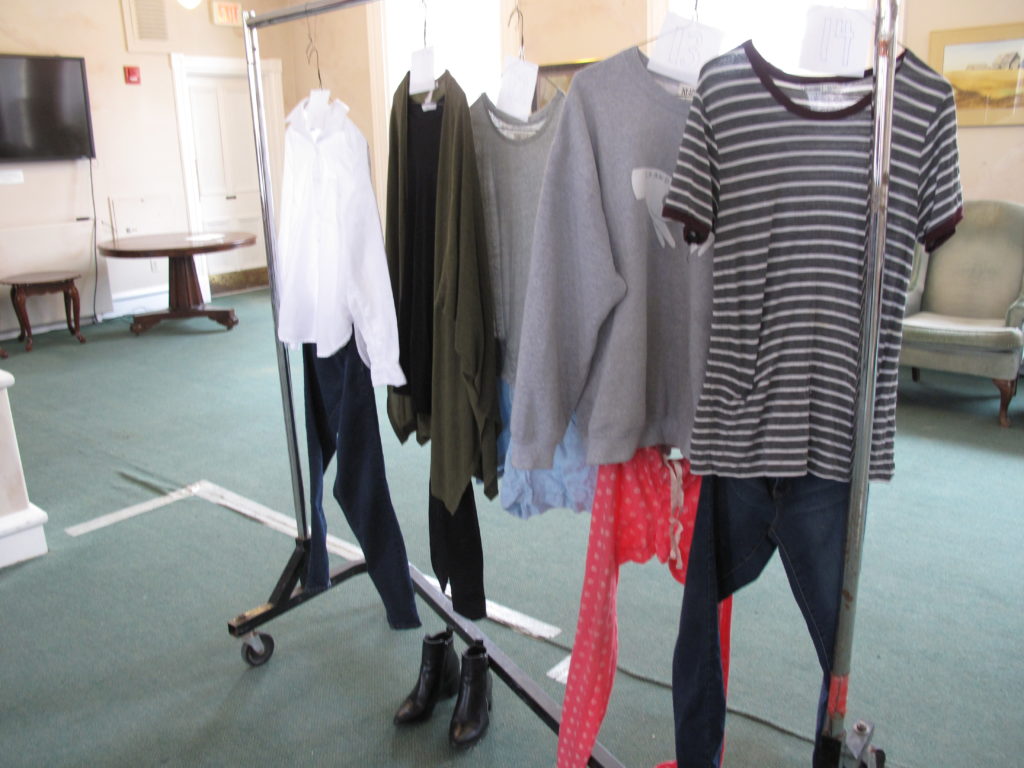By: Allison O’Brien
Striped flannel pyjamas, a t-shirt and shorts, and a black long-sleeved shirt with ripped jeans.
These are some of the answers to the question “what were you wearing?â€, all too often asked when survivors of sexual assault disclose their story. The question assumes that what one is wearing might make them responsible for what has happened to them.
Through an art installation, sexual violence prevention group Our Turn UPEI emphasized that clothing has nothing to do with sexual violence by displaying sixteen outfits that were worn by sexual assault survivors when they were assaulted.
“Often times, whenever a survivor does disclose, they are asked, well, what were you wearing?†said Paxton Louise Caseley, chair of Our Turn UPEI. “And it places undeserved blame on the individual. So the idea of the exhibit is to break down that stereotype and disprove that myth.â€
“All of the outfits there are things that you wear, or I’ve worn,†she added. “They are just your typical everyday clothing. So it’s just very blatant in front of you that what you’re wearing has nothing to do with sexual violence.”
“Grey tank top of a thicker material, loose harem pants (well worn and pyjama like) no bra. He said it was the tank top,†one story read.
The art installation was first displayed at the University of Arkansas in 2013, and has since been displayed in many universities, including Carleton. The installation is inspired by a poem called “What I was Wearing.â€
The exhibit at UPEI consisted of 16 outfits and an unedited story to go along with each. The stories were submitted by anonymous survivors of sexual assault. The age of the victims at the time of their assault ranged from 6 to 23.
“A green spring jacket, a sweater, and leggings. He wanted to have sex and got angry when I said no.â€
The outfits were put together from thrift stores and donations from members of Our Turn.
According to Caseley, the responses to the exhibit have been very sombre.
“I think it’s having the proper impact, that people are getting the message that what you’re wearing has nothing to do with sexual violence,†she said. “I think though that it’s also really well received because you’re not being talked at, you just go through and you reflect yourself, and you see for yourself the unedited stories of the survivors themselves. It’s giving them the chance to take back their power and actually say what they’ve been wanting to say about what happened to them, because whenever they disclose, words are often put in their mouth or their silenced completely.â€
